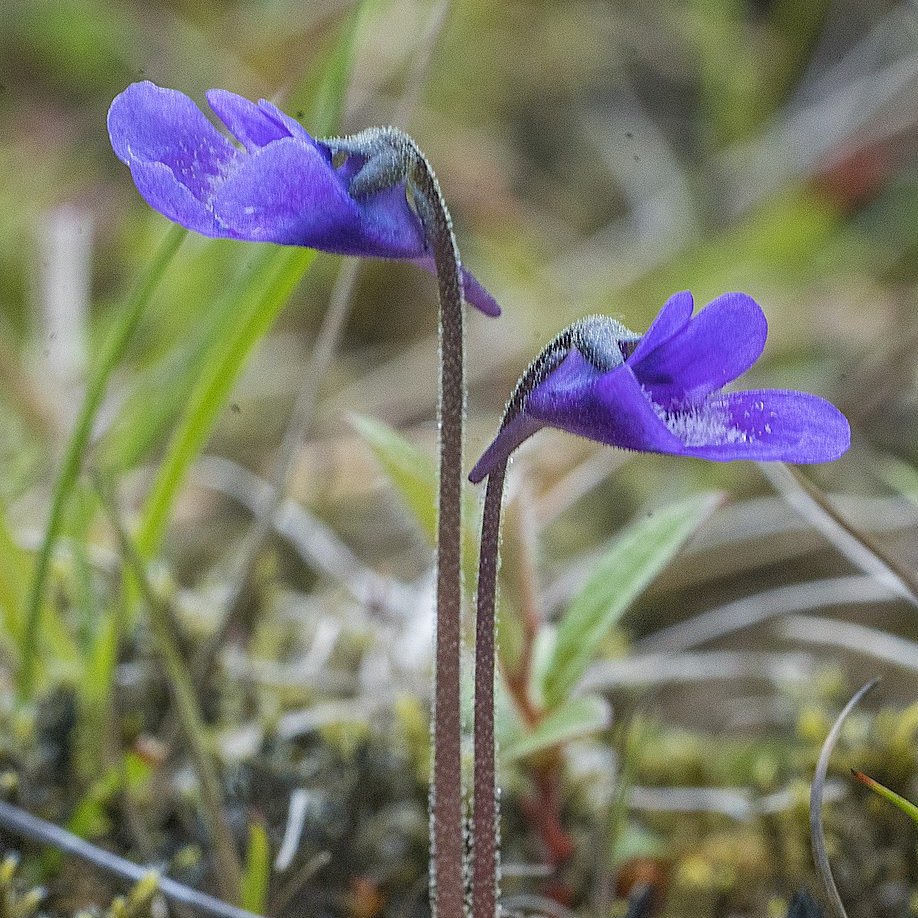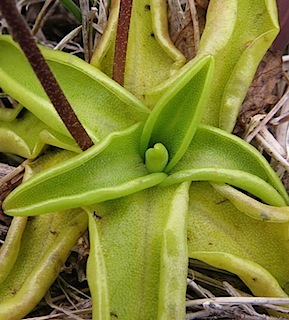
The delicate violet flowers of Common Butterwort can be spotted from May to July in boggier spots on The Lizard.
Photo: Jerzy Strzelecki, CC BY-SA 4.0, via Wikimedia Commons
Scientific name: Pinguicula vulgaris
Other common names: Bog Violet, Marsh Violet
What to look for:
- Family: Lentibulariaceae (Butterwort family)
- Flowers: Violet-blue, funnel-shaped
- Leaves and stem: The flower stem are long and thin, with between one and three per plant; the pointed leaves are in a yellowish basal rosette
- Height: Flowers 5 to 15 cm tall, leaves 2 to 8 cm long.
- Where: Marshy and boggy places; wet heaths; near freshwater.
- When: Flowers between May and July
- Habit: Upright flower stem, with basal rosette of leaves.
If you are walking through a boggy place, you might spot the yellow-green leaves of Common Butterwort. Even when it’s flowering between May and July, the starfish-shaped leaf rosettes are still what you are most likely to see. The flowers, in contrast, are a delicate violet-blue to purple, held gracefully aloft on long thin stems.
It’s the leaves that are the main business end of this insectivorous plant. Glands all over the leaves produce a sticky substance that traps insects unfortunate enough to land. The leaf then curls over the insect, which is then slowly digested. This evolved ability to gain energy resources from insect prey means butterworts are well-adapted to the less fertile soils in which we find them.


Land drainage and agricultural intensification have meant that populations of Common Butterwort have been declining since the nineteenth century. The decline remains marked in southern parts of the UK, including Cornwall, where The Lizard remains one of the best places to find this intriguing plant.
Did you know…?
…People used to rub the leaf juices (the same sticky fluid that traps insects) on cows’ udders to deter evil forces from affecting the milk.
More information and references:
Rose, F. and O’Reilly, C., 2006. The Wild Flower Key, 2nd edition. Frederick Warne, London.
Stace, C., 2010. New Flora of the British Isles, 3rd edition. Cambridge University Press, Cambridge.
Published: July 2015
Author: Amanda Scott
Photos: top – Jerzy Strzelecki, CC BY-SA 4.0; sideways view of flower – Ivar Leidus, CC BY-SA 4.0; both via Wikimedia Commons; basal rosette – Steve Townsend
